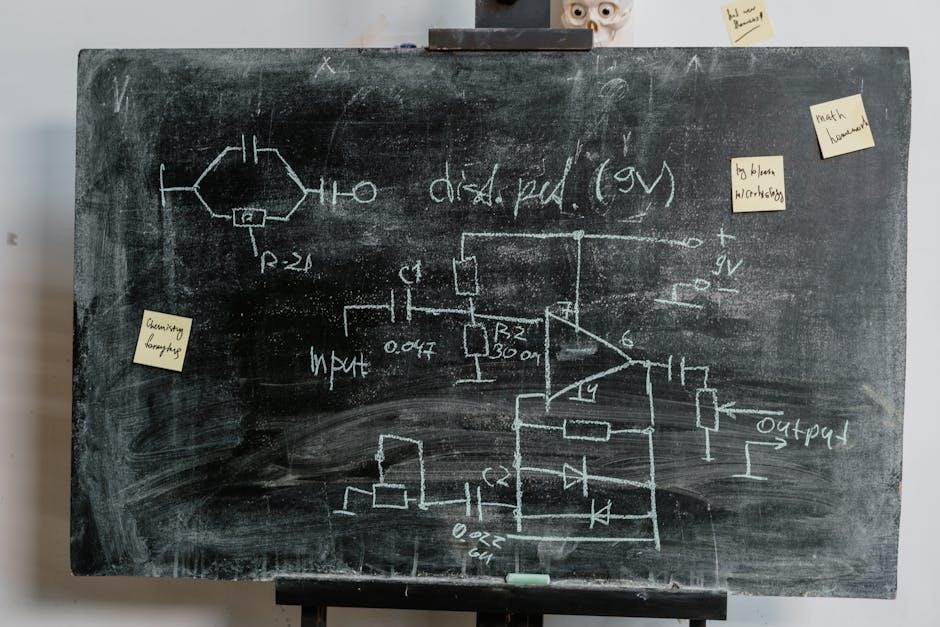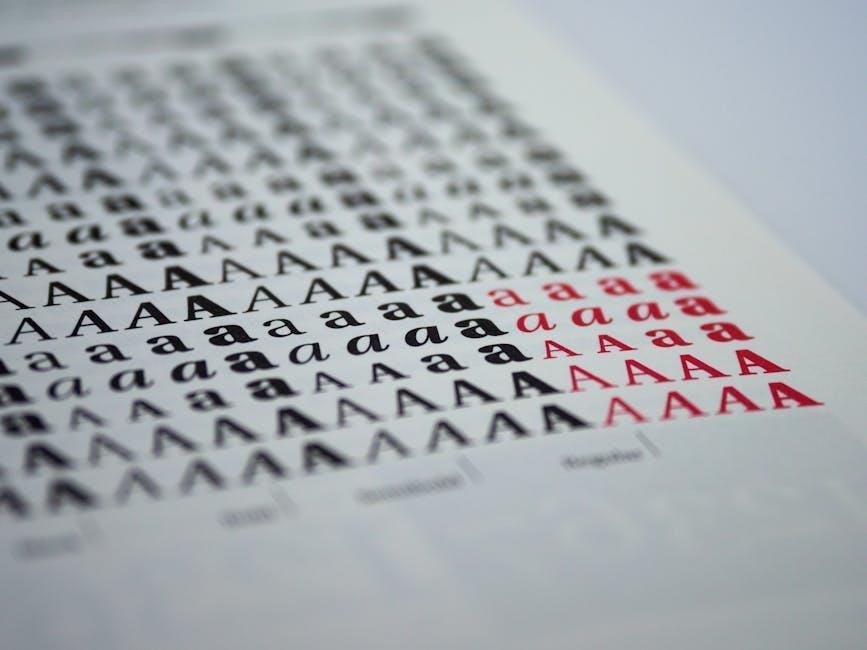Meal planning is a game-changer for moms seeking to streamline their daily routines while ensuring healthy‚ delicious meals for their families. By organizing meals in advance‚ moms can save time‚ reduce stress‚ and create a balanced diet for their loved ones. It involves selecting recipes‚ making grocery lists‚ and prepping ingredients to simplify cooking during busy weeks. Many moms find success by rotating favorite dishes‚ incorporating leftovers‚ and using convenient tools like magnet boards or apps. Whether you prefer weekly or monthly plans‚ meal planning helps prioritize nutrition‚ reduce food waste‚ and make mealtimes enjoyable. It’s a practical way to nourish your family without the last-minute chaos.


The Importance of Meal Planning for Busy Mothers
Meal planning is a vital tool for busy mothers who strive to balance family life‚ work‚ and personal well-being. It offers a structured approach to managing mealtimes‚ ensuring that nutritious and delicious meals are consistently provided for the family. For moms‚ meal planning is not just about food; it’s about creating a sense of control and calm in an otherwise chaotic schedule.
Time Management and Efficiency
One of the most significant benefits of meal planning is its ability to save time. By organizing meals for the week‚ moms can avoid the daily dilemma of deciding what to cook‚ which often leads to last-minute takeout or fast food. Preparing a weekly meal plan allows for efficient grocery shopping‚ reducing multiple trips to the store and minimizing food waste. Many moms find success by dedicating a specific day‚ such as Sunday‚ to meal prep‚ where they chop vegetables‚ portion grains‚ and even mix spices in advance. This preparation ensures that weeknights are less stressful‚ as the majority of the work is already done.

Reducing Stress and Chaos
Meal planning acts as a stress-relief strategy for busy moms. Knowing what’s for dinner each night eliminates the panic of scrambling for ingredients or ideas at the last minute. It also helps create a routine‚ which can be comforting for both moms and their families. For example‚ designating specific days for certain types of meals—like Taco Tuesday or Crockpot Monday—can make decision-making easier and more enjoyable. This structure not only reduces mental overload but also fosters a sense of accomplishment as meals are prepared and enjoyed without hassle.

Promoting Healthy Eating
A well-planned meal schedule ensures that the family is eating balanced and nutritious meals. By selecting recipes in advance‚ moms can prioritize whole foods‚ fruits‚ vegetables‚ and lean proteins‚ avoiding the temptation of unhealthy convenience foods. Meal planning also allows for dietary customization‚ catering to allergies‚ preferences‚ or specific health goals. For instance‚ incorporating sheet pan meals or slow cooker recipes makes it easier to include a variety of vegetables and proteins in a single‚ easy-to-prepare dish. This approach supports the overall health and well-being of the family while teaching children the importance of nutrition.
Cost Savings and Reduced Waste
Meal planning is a practical way to manage the family budget and reduce food waste. By creating a grocery list based on the week’s meals‚ moms can avoid impulse purchases and ensure that every item bought is used. This approach also helps minimize wasted food‚ as ingredients are deliberately chosen for specific recipes. For example‚ using leftover vegetables in a soup or stretching meals with budget-friendly options like cauliflower rice can make a significant difference in monthly grocery expenses. Over time‚ these small changes add up‚ making meal planning a financially savvy choice.
Flexibility and Adaptability
While meal planning provides structure‚ it doesn’t have to be rigid. Moms can build flexibility into their plans by including leftovers‚ takeout nights‚ or easy meals like hot dogs and tater tots. This adaptability ensures that meal planning remains sustainable‚ even on the busiest or most unpredictable days. For example‚ having a list of go-to recipes that can be prepared quickly or using pre-made ingredients from stores like Costco or Wegmans can save time without compromising on quality. The key is to create a system that works for the family’s unique needs and lifestyle.
Meal planning is more than just a practical task; it’s a way for busy mothers to reclaim control over their time‚ reduce stress‚ and nurture their families with wholesome meals. By incorporating simple strategies like weekly planning‚ meal prep‚ and grocery list organization‚ moms can create a system that works for them‚ not against them. Whether it’s saving money‚ promoting health‚ or simply enjoying more quality time with loved ones‚ meal planning is a powerful tool that every busy mom can benefit from.
Benefits of Meal Planning
Meal planning is a game-changer for moms‚ offering numerous benefits that extend beyond the kitchen. It saves time by eliminating last-minute meal decisions and reduces stress by creating a clear plan for the week. By organizing meals in advance‚ moms can ensure their families enjoy healthy‚ balanced dishes while avoiding reliance on fast food. Meal planning also helps reduce grocery bills by minimizing waste and encouraging efficient shopping. Additionally‚ it fosters creativity in the kitchen and allows for customization to suit dietary preferences. Ultimately‚ meal planning brings order to chaotic schedules‚ helping moms feel more organized and confident.

How Meal Planning Saves Time and Reduces Stress
Meal planning is a powerful tool that helps moms manage their busy lives more efficiently‚ saving valuable time and reducing stress. One of the primary ways it achieves this is by eliminating the daily dilemma of deciding what to cook. Without a plan‚ many moms find themselves scrambling at the last minute‚ trying to come up with a meal idea that everyone will enjoy. This can lead to feelings of overwhelm and frustration‚ especially after a long day. By creating a meal plan‚ moms can avoid this stress and instead rely on a structured schedule that outlines every meal for the week.

Another time-saving benefit of meal planning is the ability to streamline grocery shopping. When you know exactly what meals you’ll be preparing‚ you can create a detailed grocery list‚ ensuring you buy only what you need. This not only prevents waste but also saves time wandering aisles or trying to decide what to purchase. Additionally‚ having a list helps you avoid multiple trips to the store‚ as you’re less likely to run out of essential ingredients mid-week.

Meal planning also reduces stress by providing a sense of control and organization. Moms often juggle multiple responsibilities‚ and knowing that meals are taken care of can be a huge relief. It eliminates the pressure of making spontaneous decisions and reduces the likelihood of resorting to fast food or takeout‚ which can be unhealthy and expensive. Instead‚ a well-planned menu ensures that nutritious‚ home-cooked meals are always available‚ even on the busiest days.
Furthermore‚ meal planning can help moms avoid the mental fatigue that comes with constant decision-making. Research shows that we all have a limited capacity for making decisions‚ and by automating something as significant as mealtime‚ moms can conserve mental energy for other important tasks. This can lead to a calmer‚ more balanced home environment‚ where family time is enjoyed rather than rushed.
In addition to saving time and reducing stress‚ meal planning fosters a sense of accomplishment. Seeing a week’s worth of meals laid out in advance can be incredibly satisfying‚ giving moms a feeling of being in control and prepared. It also creates opportunities for involving the family in the process‚ whether it’s letting kids help with meal prep or allowing everyone to contribute to the planning. This can turn mealtime into a collaborative‚ enjoyable experience rather than a source of stress.
Overall‚ meal planning is a simple yet effective strategy for managing the demands of motherhood. By saving time‚ reducing stress‚ and creating a sense of order‚ it empowers moms to feel more confident and capable‚ even in the midst of a chaotic schedule. With a clear plan in place‚ moms can focus on what truly matters—nurturing their families and creating lasting memories around the dinner table.
Cost Savings Through Efficient Grocery Shopping
Meal planning is not only a time-saving strategy but also a powerful way to reduce household expenses through efficient grocery shopping. By creating a structured plan‚ moms can avoid impulse purchases‚ buy only what is needed‚ and make the most of their budget. This approach ensures that grocery shopping becomes a cost-effective process‚ helping families save money while still enjoying nutritious and delicious meals.
One of the most significant ways meal planning leads to cost savings is by eliminating food waste. When meals are planned in advance‚ moms can purchase ingredients with the confidence that they will be used before they expire. This reduces the likelihood of throwing away spoiled or unused items‚ which can be a substantial expense over time. Additionally‚ planning meals around seasonal produce or items on sale can further lower grocery bills‚ as these products are often priced more affordably.

Another cost-saving benefit of meal planning is the ability to buy in bulk and plan meals around staple ingredients. By identifying common ingredients used across multiple recipes‚ moms can purchase larger quantities at a lower cost per unit. For example‚ buying rice‚ pasta‚ or canned goods in bulk can be more economical than purchasing smaller amounts frequently. This approach also reduces the number of trips to the store‚ saving time and fuel costs.
Meal planning also helps moms avoid the financial pitfalls of last-minute takeout or restaurant meals. When a meal plan is in place‚ there’s no need to rely on expensive convenience foods or dining out. Instead‚ families can enjoy home-cooked meals that are not only healthier but also more budget-friendly. Over time‚ this can lead to significant savings‚ as the cost of eating out can add up quickly.
Furthermore‚ a well-organized grocery list based on a meal plan prevents impulse buying‚ which is a common source of unnecessary expenses. Without a plan‚ shoppers often pick up items they don’t need‚ driven by cravings or marketing displays. By sticking to a list‚ moms can stay focused on their budget and avoid overspending. This level of control over grocery shopping helps allocate funds more effectively‚ ensuring that every dollar spent contributes to nourishing meals for the family.
In addition to these strategies‚ meal planning allows moms to take advantage of sales and discounts. By reviewing weekly grocery ads and planning meals around items that are on sale‚ families can stock up on non-perishable items or proteins at lower prices. Coupons‚ cashback apps‚ and loyalty programs can also be maximized when purchases are intentional and planned‚ further reducing grocery expenses.
Overall‚ meal planning is a practical and effective way to save money through efficient grocery shopping. By minimizing waste‚ buying in bulk‚ avoiding last-minute dining out‚ and staying focused on a budget‚ moms can create delicious‚ nutritious meals while keeping costs under control. This approach not only benefits the family’s finances but also fosters a sense of accomplishment and responsibility‚ making mealtime a positive and stress-free experience for everyone.

Creating a Meal Plan
Creating a meal plan is a straightforward process that can help moms streamline their daily routines‚ save time‚ and ensure that their families enjoy balanced and nutritious meals. By following a structured approach‚ moms can tailor their meal plans to suit their family’s preferences‚ dietary needs‚ and busy schedules. Here’s how to create an effective meal plan:
Step 1: Assess Your Needs
Start by determining how many meals you need to plan for each day. Consider breakfast‚ lunch‚ dinner‚ and snacks for the entire family. Decide on the number of days you want to cover in your plan—typically‚ planning for a week is manageable and allows for some flexibility. If weekends are unpredictable‚ keep those meals simpler or more flexible.
Step 2: Consider Preferences and Dietary Requirements
Think about everyone’s preferences and dietary restrictions. If your children are picky eaters‚ include meals they enjoy. If there are specific dietary needs‚ such as vegetarian‚ gluten-free‚ or low-carb‚ ensure these are accounted for. Look for versatile recipes that can be adapted to suit everyone’s needs.
Step 3: Plan Around Your Schedule
Match your meal plan to your family’s schedule. For busy days‚ opt for quick‚ easy-to-prepare meals or use a slow cooker for hands-off cooking. On less hectic days‚ you can plan more elaborate meals or try new recipes.
Step 4: List Meals for Each Day
Create a list of meals for each day‚ ensuring variety to keep things interesting. Avoid repeating the same dishes too frequently‚ and incorporate different cuisines or flavors to keep meals engaging. You can rotate ingredients or use similar components in different recipes to maintain variety while minimizing waste.
Step 5: Use What You Already Have
Before planning new meals‚ check your pantry‚ fridge‚ and freezer to see what ingredients you already have. This helps reduce waste and saves money. Build your meal plan around these items‚ incorporating them into your recipes.
Step 6: Make a Grocery List
Once your meal plan is outlined‚ create a grocery list of the ingredients you need. Organize the list by categories (e.g.‚ produce‚ meats‚ dairy‚ grains) to make shopping more efficient. Stick to your list to avoid impulse purchases and stay within your budget.
Step 7: Shop Smart
Review weekly grocery ads to identify items that are on sale. Adjust your meal plan to incorporate these discounted products‚ which can help reduce costs. Additionally‚ use coupons‚ cashback apps‚ or loyalty programs to maximize savings.
Step 8: Prep in Advance
To save time during the week‚ consider meal prepping on weekends or days off. Chop vegetables‚ marinate meats‚ or prepare entire meals that can be reheated later. This approach simplifies cooking during busy weekdays.
Step 9: Allow for Flexibility
While meal planning provides structure‚ it’s important to remain flexible. If a family member doesn’t like a planned meal or if unexpected changes arise‚ have one or two backup options available. These could be simple meals like salads‚ omelets‚ or leftovers.
Step 10: Incorporate Leftovers
Plan to use leftovers creatively to reduce food waste and save time. For example‚ last night’s roasted chicken can become tomorrow’s chicken salad or soup. This approach also adds variety to your meals.
By following these steps‚ moms can create a meal plan that is tailored to their family’s needs‚ reduces stress‚ and saves time and money. The key is to stay organized‚ flexible‚ and intentional with their planning to ensure that mealtimes remain enjoyable and stress-free.



























































































